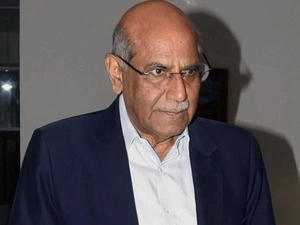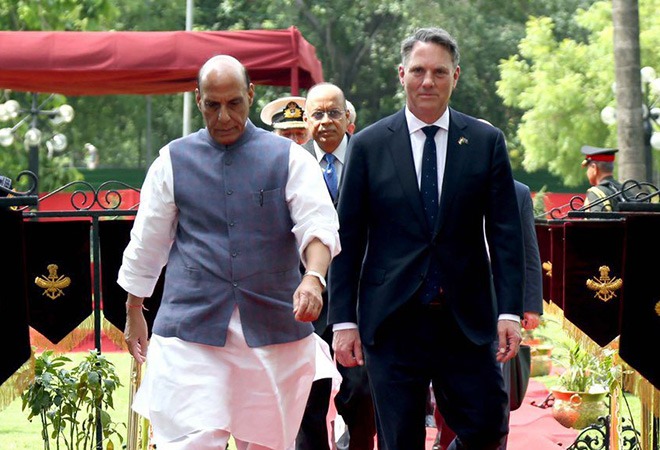G7 & NATO: India Can Be in a Policy Bind as Focus Turns on Russia & China
THE QUINT
APLN member C Uday BHASKAR assesses the implications for India of the recent G7 and NATO meetings, arguing that India’s ability to forge its own course while being a member of BRICS and the Quad will be crucial in the coming years. Read the original article here.
The summary of the deliberations at the just-concluded back-to-back summit meetings of the G7 and NATO in Germany and Spain, respectively, provides a comprehensive overview of the complex and seemingly intractable challenges confronting the global community, and of the adversarial geo-political groupings that are emerging in relation to the Russian invasion of Ukraine and other regional dissonances.
India was a special invitee (along with four other nations) at the G7 summit, and Prime Minister Narendra Modi joined the 11 other leaders in Germany. Collectively, the joint statements released at the summits have multi-layered relevance for Delhi, even while highlighting India’s status as a ‘significant variable’ in what is being described as a new ‘Cold War’ – but there are some significant caveats. Turkey’s adroit negotiations with the US and the EU in enabling the expansion of NATO may be the most significant strategic outcome of the current deliberations. Concurrently, this rapprochement between Washington and Istanbul has the potential to impact southern Asian regional developments and the orientation of the extended Islamic block of countries.
Comprehensive Statements
The end-June joint statements provide considerable content, as also continuity, contrast and context, given that the US-led NATO is a military alliance and the G7 brings together the ‘richest’ seven democracies (Canada, France, Germany, Italy, Japan, UK, US and EU) that are dependent on the US for their security. Japan is the only major economy that is part of the G7 but not a NATO member, though it has a separate military alliance with the US that includes a nuclear umbrella.
The G7 document is over 12,250 words, and to the credit of the drafting committees, almost all major global and regional challenges have been identified. These span from climate change and the COVID-19 pandemic to all the wars and conflicts that plague the world. But Ukraine leads the list.
The NATO Madrid document is much shorter in length, at under 2,000 words, and while the immediate focus is on Russia and the war in Ukraine, the document unveils the larger security posture of NATO. Several strands merit mention. Acknowledging the centrality of the rules-based global order and the ethos of the democratic principle, it notes, “We are united in our commitment to democracy, individual liberty, human rights, and the rule of law. We adhere to international law and to the purposes and principles of the Charter of the United Nations. We are committed to upholding the rules-based international order.”
Similar declaratory semantic flourish is evident in the G7 deliberations, as also at the Quad summit earlier in the year – the signalling is evident.
Russia has been identified as the new challenge to NATO and a new ‘Strategic Concept’ has been outlined, which will seek to bolster cooperative security for the alliance, whose expansion has been bitterly resisted by Moscow and which was the causus belli for the 24 February invasion of Ukraine.
Increasing NATO Military Presence in Europe
At Madrid, the other significant decision was to invite Finland and Sweden – two nations that have remained neutral through the Cold War and post-Cold War decades – to join NATO, now that the Turkish veto has been withdrawn. Moscow’s response will be instructive, both for the trajectory of the war in Ukraine and the likely repercussions for an expanded NATO. The organisation, formed with 12 members in 1949, will soon have 32 members by end-2022.
The current NATO members and the US have also resolved to increase their military presence in Europe; the number of personnel on operational alert will increase tenfold. This is to be complemented by the US, which will maintain 100,000 troops in Europe, up by 20,000 from pre-Ukraine war levels. Clearly, the military tension in Europe will be on a steady simmer for some time.
It is also pertinent to note that the NATO-Madrid document makes explicit reference to China and the challenge that Beijing poses. It notes, “We face systemic competition from those, including the People’s Republic of China, who challenge our interests, security, and values and seek to undermine the rules-based international order.”
Here, the continuity in the Foreign and Security Policy (FSP) section of the G7 document released in Germany (28 June) bears recall. While the entire document is over 12,000 words, the FSP gets 2,800-plus words, and again, both Russia and China are mentioned in some detail. While the Ukraine war receives considerable mention, it is instructive by way of the emerging geopolitical clusters that the G7 has arrived at consensus language in relation to China.
A China-Russia Dyad on the Cards?
Noting that the G7 is concerned about the situation in the East and South China Seas, it adds, “We strongly oppose any unilateral attempts to change the status quo by force or coercion that increase tensions. We emphasise the universal and unified character of the United Nations Convention on the Law of the Sea (UNCLOS), and reaffirm UNCLOS’s important role in setting out the legal framework that governs all activities in the ocean and the seas. We stress that there is no legal basis for China’s expansive maritime claims in the South China Sea. In this regard, we urge China to fully comply with the arbitral award of 12 July 2016 and to respect navigational rights and freedoms enshrined in UNCLOS.”
This assertion by the G7 is very pointed, and a sharp response from Beijing can be expected. While Japan is the most affected G7 member in this reference to the western Pacific, the concerns of ASEAN have also been noted. All these issues will be very relevant for India as it prepares for the G20 summit in Indonesia later this year. Delhi will also assume the Chair of the G20 and will host the next summit in 2023.
The emergence of a China-Russia dyad is on the cards. The manner in which India navigates its own path while being a member of BRICS and the Quad, even while dealing with the headwinds of the COVID-19-induced economic downturn and the ravages of climate change, will be critical. Cumulatively, these developments point to complex policy turbulence for Delhi in the years ahead.




